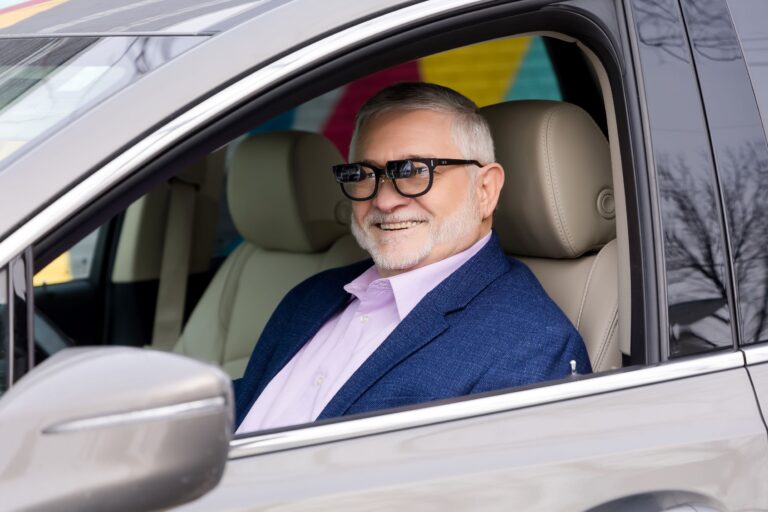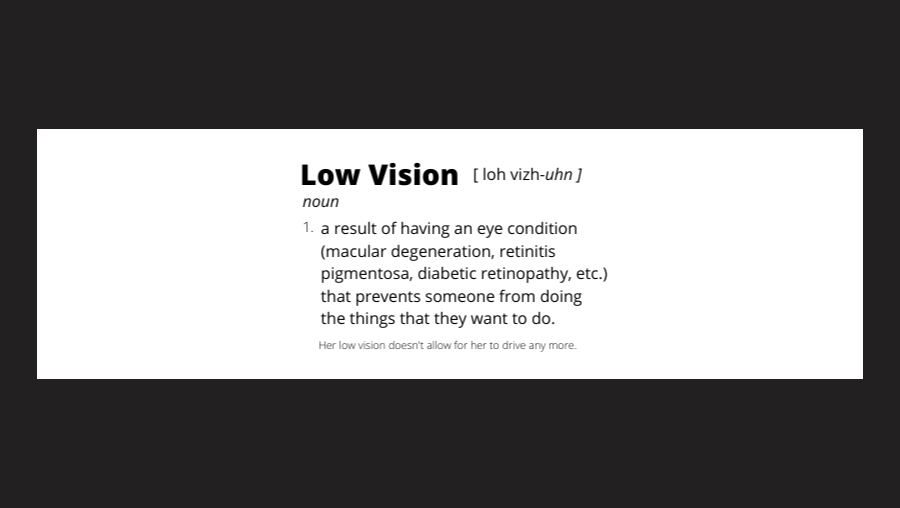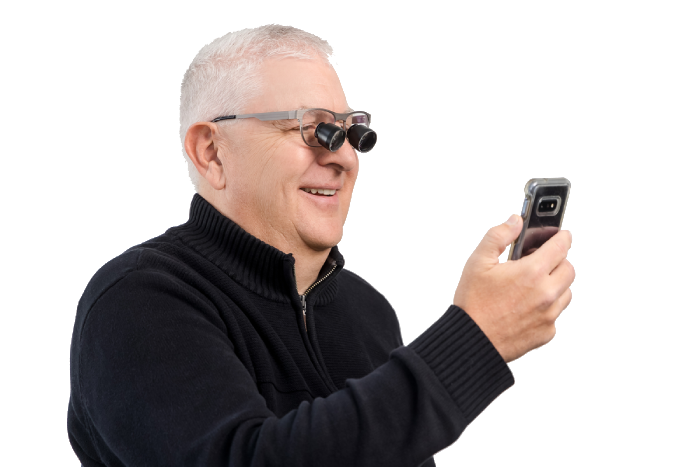Have you ever found yourself confused about low vision? You are not alone. People call into our phone consultation line every day with questions.
Outside of the vision community, the average person likely doesn’t know what we mean when we use the term ‘low vision.’ It becomes synonymous with the term ‘poor vision.’ And even in the vision community, there are a few different definitions floating around that cause confusion, especially when it comes to when to refer a patient to a low vision specialist.
Common Medical Definitions of Low Vision
- Low vision is vision loss that can’t be corrected with glasses, contacts, medication, or surgery.
- Low vision is a term that refers to vision 20/70 or worse.
As we define it in our practice, low vision is a result of having an eye condition that prevents someone from doing the things that they want to do.
Common Eye Conditions That Can Cause Low Vision Are
- macular degeneration
- Stargardt disease
- ocular albinism
- retinitis pigmentosa
- diabetic retinopathy
- stroke-hemianopsia
There does need to be some usable vision to work with.
COMMON TASKS THAT PEOPLE WANT TO DO
- reading- books, newspapers, magazines, sheet music, labels on packaging including prescriptions
- seeing faces
- driving
- playing cards
- art projects
- crafts
- watching tv
- seeing the food on their utensils

What Our Low Vision Practice Focuses on
Is identifying the correct hands-free device, typically a very specialized type of glasses (bioptic telescope, E-Scoop, prismatic reading glasses), to match both the condition and task of the person. This could mean that one person may need more than one prescription depending on what they want to see/do.
As the first definition of low vision above states, we can’t fully correct the eye condition. What we do is improve the ability to see and, thereby, do by enhancing/magnifying what is working or by expanding the peripheral vision.
This is a Typical Low Vision Patient
Meet Jane. Jane has macular degeneration. She found out that new glasses won’t help and there isn’t a cure. She can’t read her Bible anymore or see the numbers well enough on her bills. It’s also hard to tell what is happening on tv. She feels frustrated and down. Jane has low vision. She is a perfect candidate for a low vision evaluation.

Some Questions to Identify if Someone is a Low Vision Candidate
- Do you have a vision condition?
- Are there things that you can no longer do as a result?
- Does not being able to do these things frustrate you?
If the answer to all three of these questions is ‘Yes’, then the person would benefit from a low vision consultation. If the answer to any of these questions is ‘No’, they do not have low vision (they may have poor vision.)
Another Example to Illustrate the Difference Between Low Vision and Poor Vision
Take the example of someone who is hard of hearing, George. George has mild hearing loss (poor hearing). He mentions it to his primary care physician, but it is not severe enough to warrant a referral to an audiologist. Instead, George goes out and buys an over-the-counter amplification device so that he can hear his tv better.

Then there is Dennis. Dennis has more severe hearing loss than George. There are some tones that he can’t hear like the seatbelt alarm in his car and he is concerned that his hearing could put him in physical danger. His primary care physician referred him to an audiologist. His audiologist prescribed Dennis a specific hearing aid so that he could hear the missing tones and live confidently again.
Low vision specialists are the audiologists of the visual world. We work with those with moderate to severe vision loss issues who are frustrated with their inability to function in their everyday lives. We assess and provide custom, physical solutions for the things they want to do. Oftentimes, we see our patients for the initial assessment and then only one more time at the dispense.
WE ARE HERE TO HELP THOSE WITH LOW VISION
Ever since William Feinbloom introduced the first low vision glasses in 1936, there have been solutions that, for whatever reason, are not known to the general public (unlike hearing aids.) People come into our office frustrated having been told that there is nothing more that can be done for their vision. Some of them even doubt the validity of our services. We don’t fault them because the terminology is and has been confusing.
If you are a fellow doctor or clinician and would like to refer a low vision patient, you can download our Referral Fax Form HERE.
If you or someone you know have low vision and are interested in hearing what could be possible, we offer a courtesy phone consultation at 888-882-2040.
There is life after vision loss.



